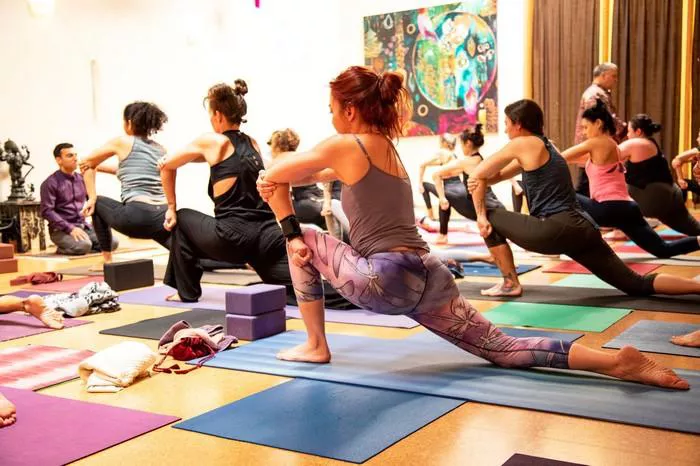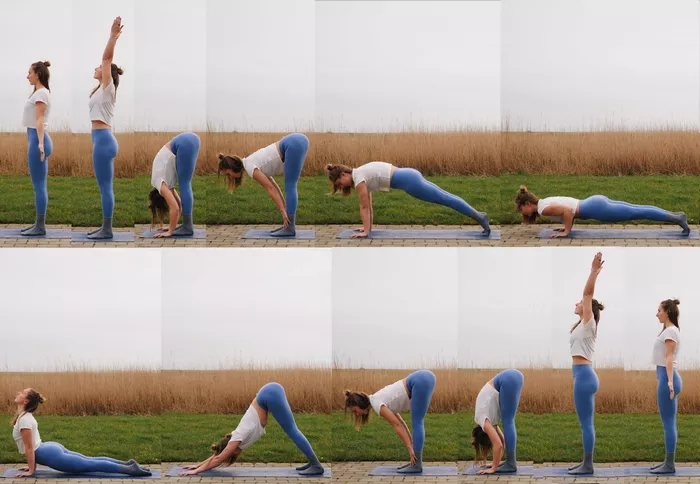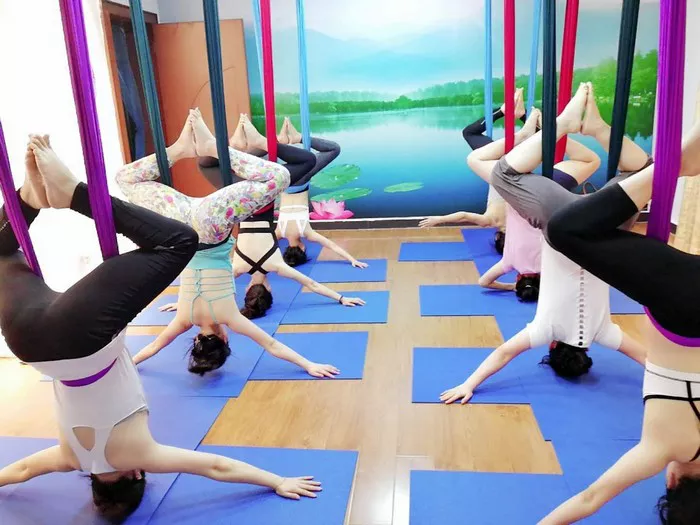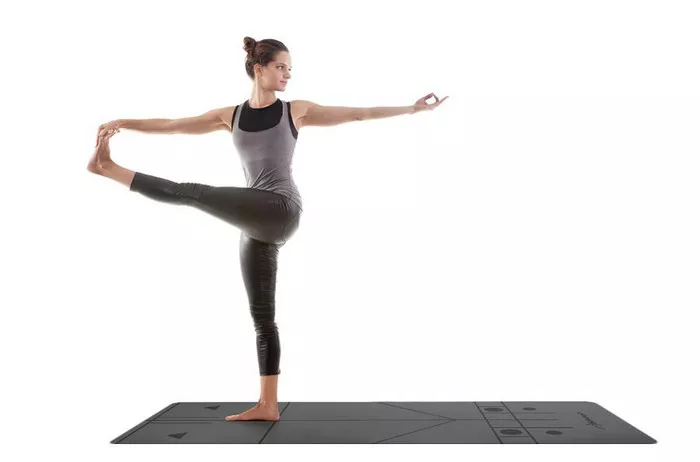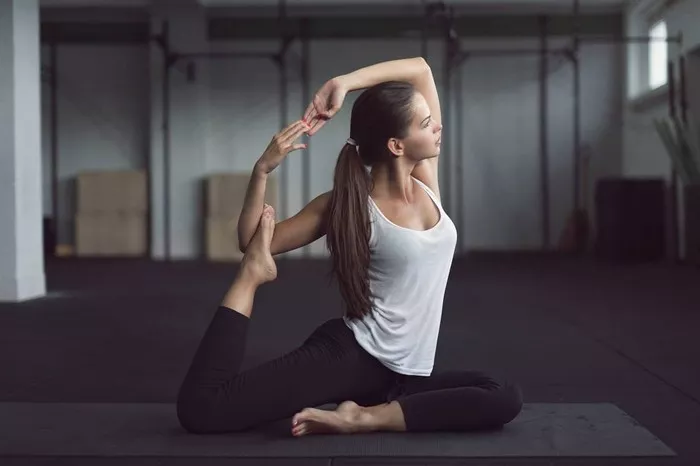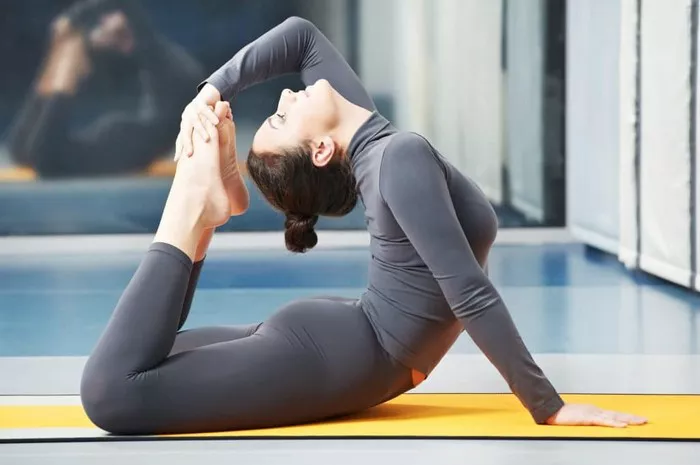Power yoga is a dynamic and physically demanding style of yoga that has gained immense popularity worldwide for its ability to combine traditional yoga principles with a modern fitness-oriented approach. More than just a workout, power yoga embraces a philosophy that promotes physical health, mental clarity, and spiritual awareness. This philosophy is rooted in the traditions of yoga while adapting to contemporary lifestyles, making it accessible to people seeking a balance between physical vitality and inner peace.
In this article, we will explore the origins, principles, and core philosophy of power yoga, and how it aligns with the broader goals of yoga as a holistic practice.
The Origins of Power Yoga
Power yoga emerged in the 1990s, primarily in the United States, as a contemporary evolution of Ashtanga Yoga, a traditional and structured form of yoga introduced to the West by Sri K. Pattabhi Jois. Ashtanga Yoga is known for its disciplined series of postures (asanas) linked together by breath (vinyasa). While Ashtanga Yoga is fixed in its sequence, power yoga took its inspiration from the flowing, dynamic movements of Ashtanga but added flexibility in structure, allowing for creative sequencing and adaptation.
Two prominent figures, Bryan Kest and Baron Baptiste, are often credited with popularizing power yoga. Both sought to create a practice that maintained the integrity of yoga’s ancient principles while making it more engaging and accessible to modern practitioners, particularly in the West. They emphasized physical fitness, strength, and stamina while staying connected to yoga’s core spiritual essence.
Key Characteristics of Power Yoga
Power yoga is distinct from other forms of yoga due to its emphasis on intensity and flow. Below are some of its defining characteristics:
Dynamic Movement and Flow: Unlike restorative or static forms of yoga, power yoga involves continuous movement. Each posture seamlessly transitions into the next, creating a vigorous, dance-like flow.
Strength and Endurance: Power yoga focuses heavily on building muscular strength and cardiovascular endurance. Poses are often held for extended periods to engage and tone muscles.
Breath Awareness (Ujjayi Pranayama): Breath control is a cornerstone of power yoga. Practitioners use Ujjayi breathing—a slow, controlled breath that creates a soft, ocean-like sound—to maintain focus, increase oxygen flow, and stabilize the mind.
Creative Sequencing: Unlike traditional Ashtanga, power yoga does not adhere to a fixed sequence of poses. This flexibility allows instructors to tailor classes to suit the energy and needs of the participants.
Focus on Personal Empowerment: The word “power” in power yoga does not only refer to physical strength but also to inner power, encouraging practitioners to cultivate self-discipline, resilience, and mental clarity.
Integration of Mind and Body: While physically demanding, power yoga retains the meditative aspects of traditional yoga, emphasizing mindfulness and the connection between movement and breath.
The Philosophy Behind Power Yoga
The philosophy of power yoga is deeply rooted in the principles of traditional yoga while emphasizing practical application for modern living. Below are the core elements of this philosophy:
1. Union of Strength and Flexibility
One of the central tenets of power yoga is the balance between strength and flexibility, both physically and mentally. In practice, this translates to developing a body that is both powerful and supple, capable of handling physical challenges with grace and ease. Similarly, it encourages mental flexibility, helping practitioners adapt to life’s changes and challenges without rigidity or resistance.
2. Mindfulness Through Movement
Power yoga promotes mindfulness by encouraging practitioners to stay fully present during the practice. This focus is achieved by synchronizing breath with movement. The repetitive yet varied nature of the flows allows practitioners to enter a state of meditative awareness, where they are fully attuned to their body and breath.
This mindfulness carries over into daily life, fostering a greater ability to respond thoughtfully rather than react impulsively to situations.
3. Empowerment and Personal Growth
The intensity of power yoga pushes practitioners beyond their comfort zones, challenging them to discover their physical and mental limits. This process fosters a sense of empowerment and self-confidence. Over time, practitioners develop resilience, both on and off the mat, enabling them to face life’s difficulties with courage and determination.
4. Holistic Wellness
Although power yoga is often marketed as a form of fitness, its philosophy extends beyond the physical. The practice is a tool for holistic wellness, encompassing:
Physical Health: Through strength-building, cardiovascular conditioning, and improved flexibility.
Mental Clarity: By reducing stress, improving focus, and cultivating mindfulness.
Emotional Balance: Encouraging the release of pent-up emotions and fostering a sense of inner calm.
This alignment of body, mind, and spirit is at the heart of yoga’s ancient purpose.
5. Self-Discipline and Consistency
Power yoga embodies the yogic principle of Tapas, which refers to self-discipline and the inner fire that drives transformation. Regular practice demands commitment, focus, and effort, fostering a disciplined approach to health and personal growth.
6. Adaptability and Creativity
In contrast to more rigid styles of yoga, power yoga celebrates adaptability. Each session can be customized to suit the needs of the individual or the group, making it an inclusive and flexible practice. This adaptability reflects the broader philosophy of yoga as a means to meet people where they are on their journey and guide them toward greater well-being.
7. Connection to Ancient Yogic Principles
While power yoga emphasizes physicality, it does not neglect the spiritual and ethical dimensions of yoga. Instructors often integrate teachings from the Eight Limbs of Yoga, such as:
Yamas (ethical guidelines) and Niyamas (personal observances): Encouraging kindness, honesty, self-discipline, and contentment.
Pratyahara (withdrawal of senses): Cultivating the ability to turn inward and focus.
Dhyana (meditation): Emphasizing mindfulness and concentration.
Benefits of Practicing Power Yoga
Physical Benefits
- Builds muscular strength and endurance.
- Enhances flexibility and balance.
- Improves cardiovascular health.
- Supports weight management and body toning.
Mental Benefits
- Reduces stress and anxiety through mindful movement and breathwork.
- Improves focus, concentration, and mental clarity.
- Fosters resilience and a positive mindset.
Spiritual Benefits
- Deepens the connection between body, mind, and breath.
- Encourages self-awareness and introspection.
- Aligns practitioners with a sense of purpose and inner peace.
Who Can Practice Power Yoga?
One of the great advantages of power yoga is its adaptability to different fitness levels and goals. It is particularly well-suited for:
- Individuals looking for a challenging, full-body workout.
- Athletes seeking to improve flexibility and prevent injuries.
- Those interested in combining physical fitness with mindfulness.
- Anyone looking to develop mental discipline and emotional resilience.
However, because of its intensity, power yoga may not be ideal for beginners or individuals with certain medical conditions. It’s always recommended to consult with a healthcare professional or experienced instructor before starting.
Power Yoga and Modern Life
In today’s fast-paced world, power yoga serves as a bridge between ancient wisdom and contemporary needs. Its dynamic nature appeals to those seeking physical fitness, while its meditative and spiritual elements offer relief from the stresses of modern living.
By emphasizing balance, mindfulness, and empowerment, power yoga provides tools to navigate life’s challenges with strength and grace. It reminds practitioners that true power lies not in force or control but in the ability to remain centered and adaptable in the face of change.
Conclusion
The philosophy of power yoga is one of integration—bringing together the physical, mental, and spiritual aspects of being into a harmonious whole. It draws from the ancient roots of yoga while meeting the demands of modern life, offering a practice that is both rigorous and reflective. At its core, power yoga is not just about building strength or achieving physical goals; it is about cultivating resilience, mindfulness, and a deeper connection to oneself and the world.
Whether you are seeking physical transformation, stress relief, or a deeper sense of purpose, power yoga offers a dynamic and empowering path. As you flow through its poses and harness the rhythm of your breath, you will find that the true philosophy of power yoga lies in its ability to awaken your inner power—both on and off the mat.
Related Topics:




